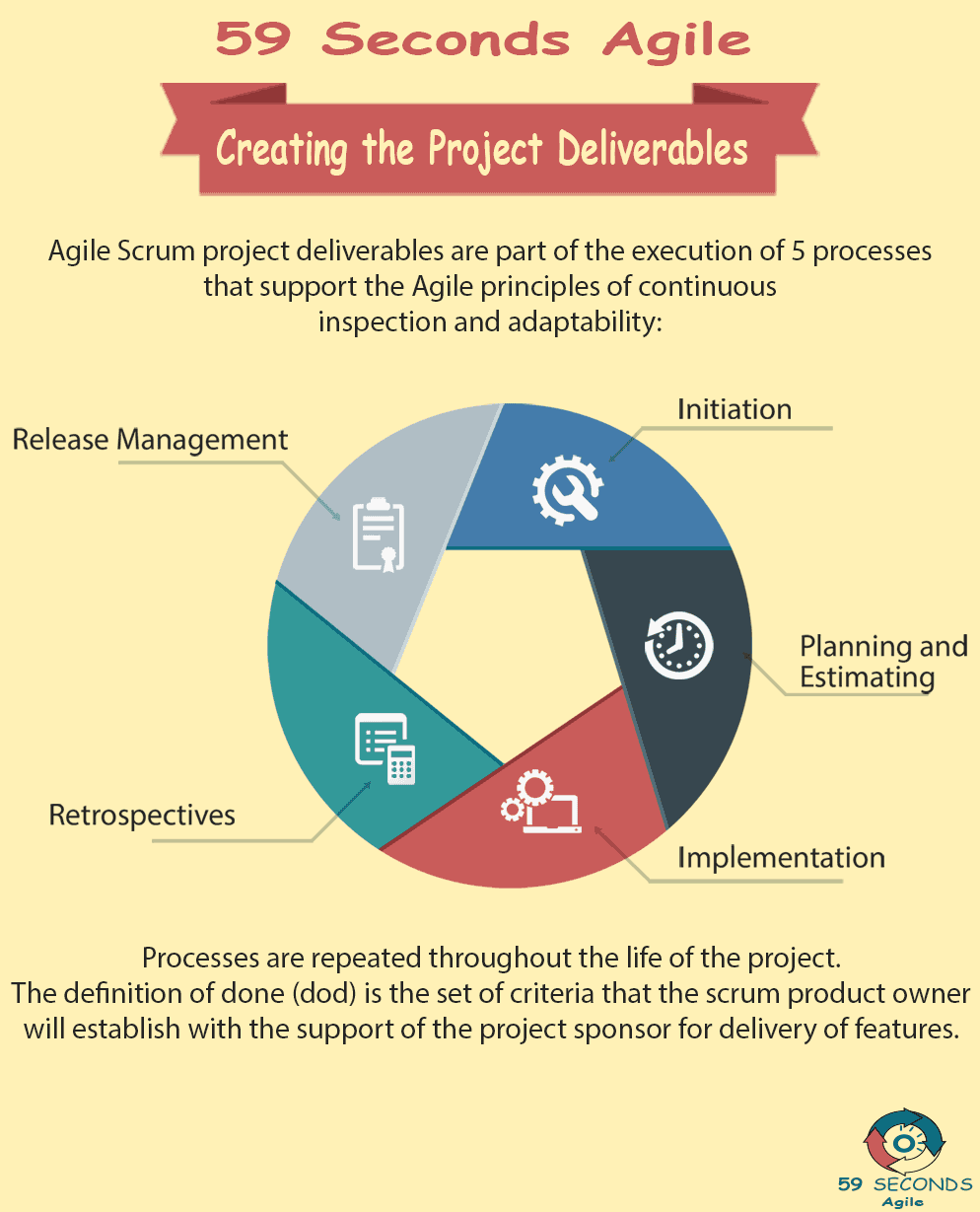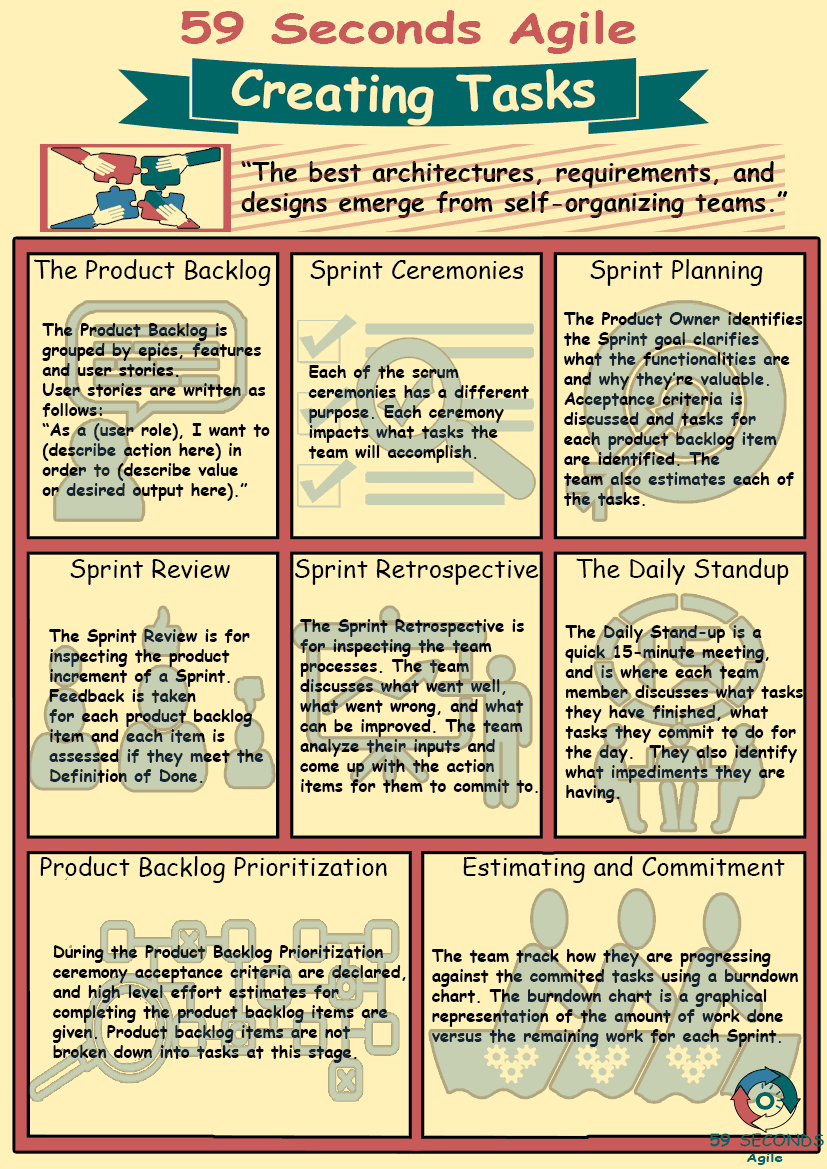This article looks to discuss ‘Creating the Project Deliverables’. It provides an introduction to the project deliverables focussing on the role of the Scrum Master in the process.
Creating the Project Deliverables
A 59 Seconds Agile Training Video
Creating the Project Deliverables for Scrum Masters – Part 2
A 59 Seconds Agile Article
Creating the Project Deliverables: Planning and Estimation
Risk Register – the principles of Agile scrum provide continuous cycles of inspecting and adapting. Risks should be easily identified and quickly resolved during each sprint execution cycle. There are risks that may be identified during the initial product backlog that needs to be captured with a mitigation plan. The scrum master will champion resolution of risks that become issues and will be responsible for managing the scrum risk register.

Creating the Project Deliverables: Implementation
The sprint execution cycles create the feature deliverables agreed to by the scrum team. The package produced by each cycle is also referred to as an increment. At the start of the sprint execution cycle, the scrum team will review features and user stories for completeness. If additional tasks are identified during sprint backlog planning, the user stories assigned to a sprint can be adjusted before commitment by the team. The scrum master facilitates the completion of the sprint backlog and hosts daily stand-ups to track progress and remove impediments. Any challenges that are addressed during daily stand-ups are assigned to the scrum master to work with the appropriate individuals to resolve.

Retrospectives
At the end of each sprint cycle, the scrum team gathers to review three items:
- What went well?
- What did not go well?
- Is there any thing the team should adjust for the next sprint?
The scrum master will be responsible for the modification of any processes identified by the team. These deliverables are important to address as part of future sprints to keep on a positive path for product improvements. Additional risks that may be identified during the retrospective will be managed by the scrum master.
Our Favourite Agile Books
We found these books great for finding out more information on Agile Scrum:
Release Management
Agile Scrum is structured so that sprints are self-contained components (or increments) that can be delivered to the market pending approval during the sprint review by the product owner. There are situations, in particular with larger projects, where releasing new features to the market are better managed in bundles. During the initial product backlog ceremony, the scrum master will facilitate identification of additional steps required for release management. The release management plan will outline the regression testing required, sprint increments to be included in each release and any additional sprints necessary to prepare the production environment for deployment of new features.
Agile Scrum provides the framework through the management of process deliveries and artifacts. The scrum master facilitates the successful completion of these artifacts to obtain the goal of the development of high-quality product features that meet the vision of a business sponsor.
Prev <— Continue Reading —> Next
The Agile User Stories and Tasks
A 59 Seconds Agile Video Animation
Prev <— Continue Reading —> Next
User Stories Applied
A 59 Seconds Agile Book Review
User Stories Applied by Mike Cohn is one of our favourite books on Agile User Stories. The book starts with an overview into user stories, and details what a user story is and the different aspects of them. He then discusses how to go about writing a user story, and provides details of the INVEST criteria that can be used to determine if the story is meeting all of its objectives. Next Mike gives an in depth discussion of who user stories are written for and where to begin when gathering the details for them. The book then discusses acceptance testing user stories, including how to go about specifying these criteria and the responsibilities of the development team and customers during this process.
Prev <— Continue Reading —> Next
The Agile Frameworks
A 59 Seconds Agile Infographic


